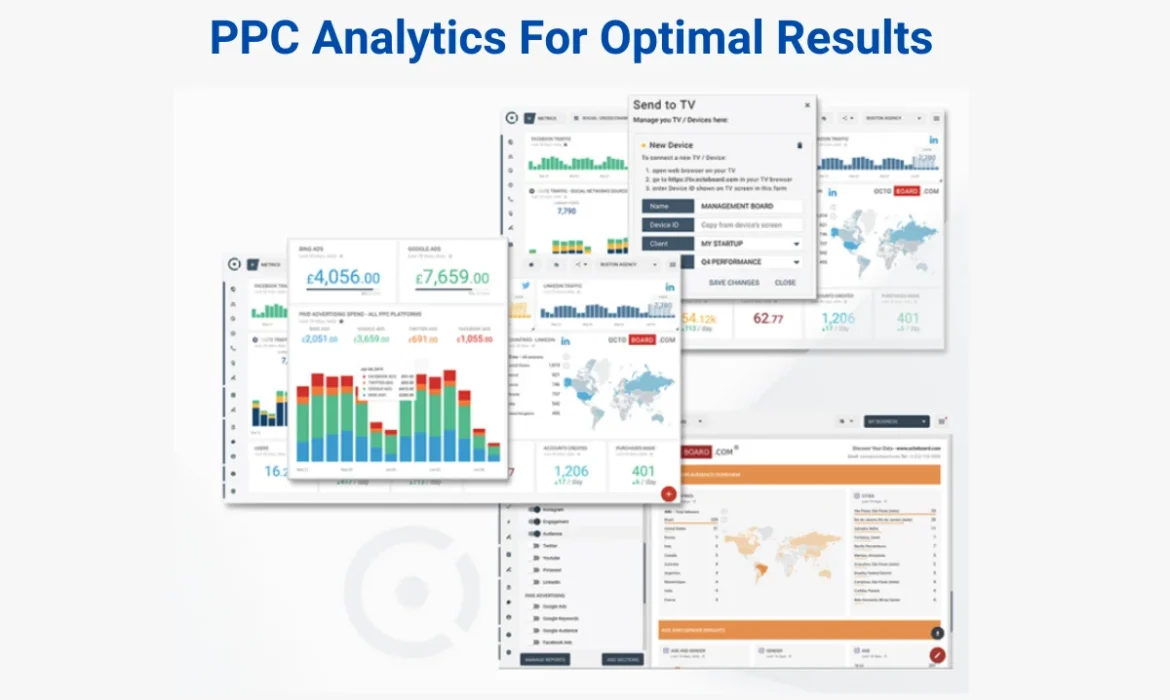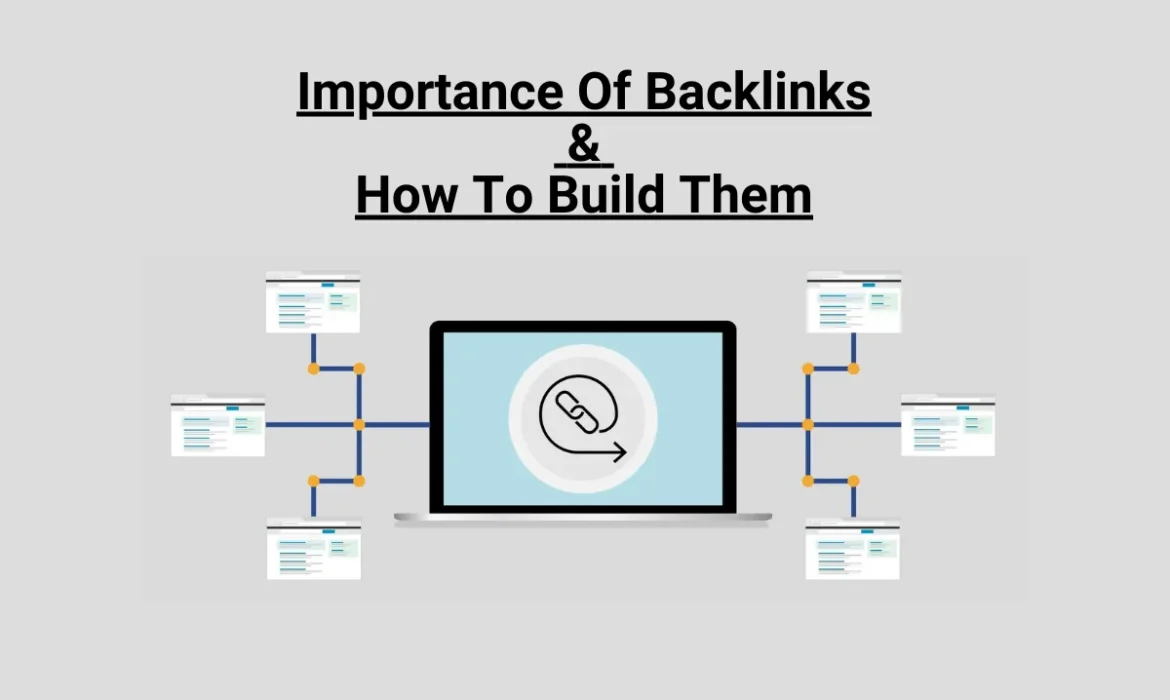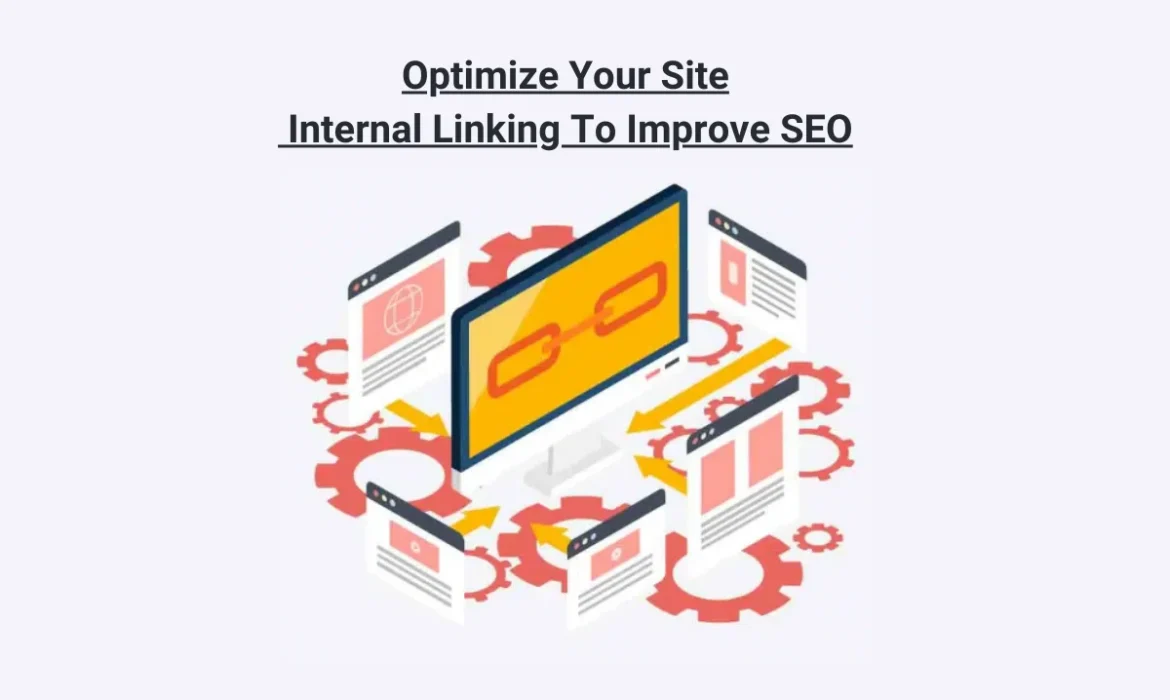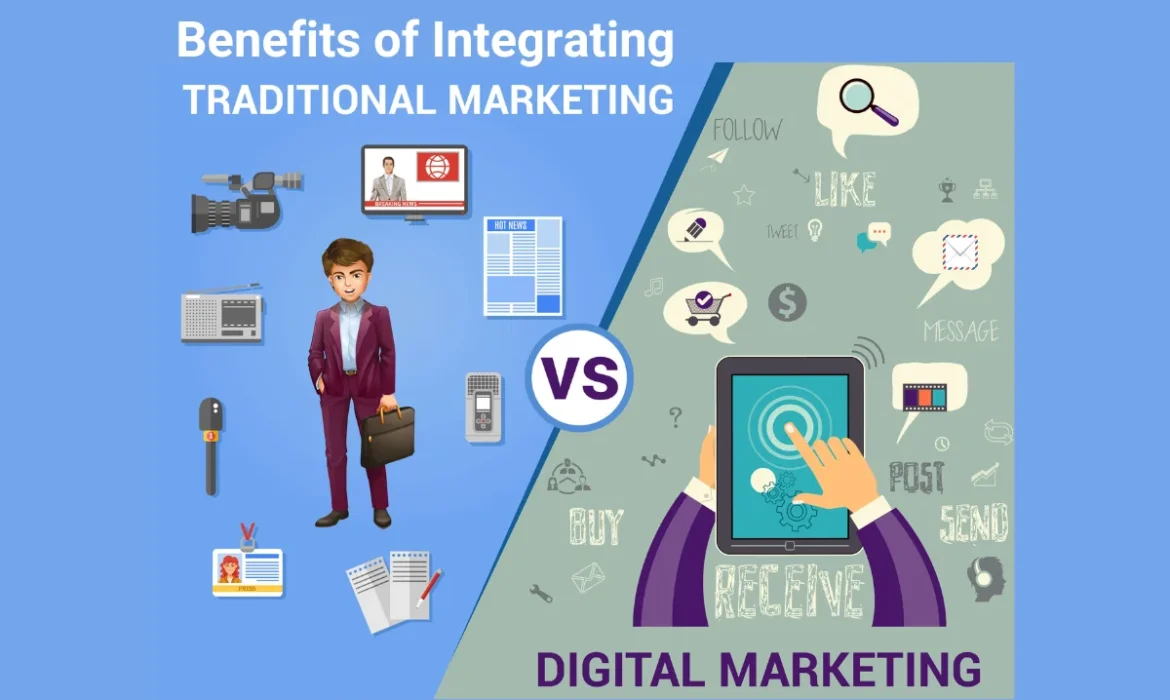Role of web design in boosting site conversion rates
In today’s digital world, web design is more than just looking good—it’s a key part of how your site turns visitors into customers. The role of web design in boosting site conversion rates is huge, as a well-designed website doesn’t just grab attention, it helps guide people smoothly through the buying process.
In this blog, we’ll dive into how your web design can make a real difference to your site’s conversions and share some practical tips to help you improve its performance.
What is Web Design
Web design is the process of creating and arranging elements on a website to ensure it is visually appealing, functional, and user-friendly. It involves layout design, color schemes, typography, and interactive features to enhance user experience and achieve specific goals, such as increasing engagement or conversions. Effective web design balances aesthetics with usability.
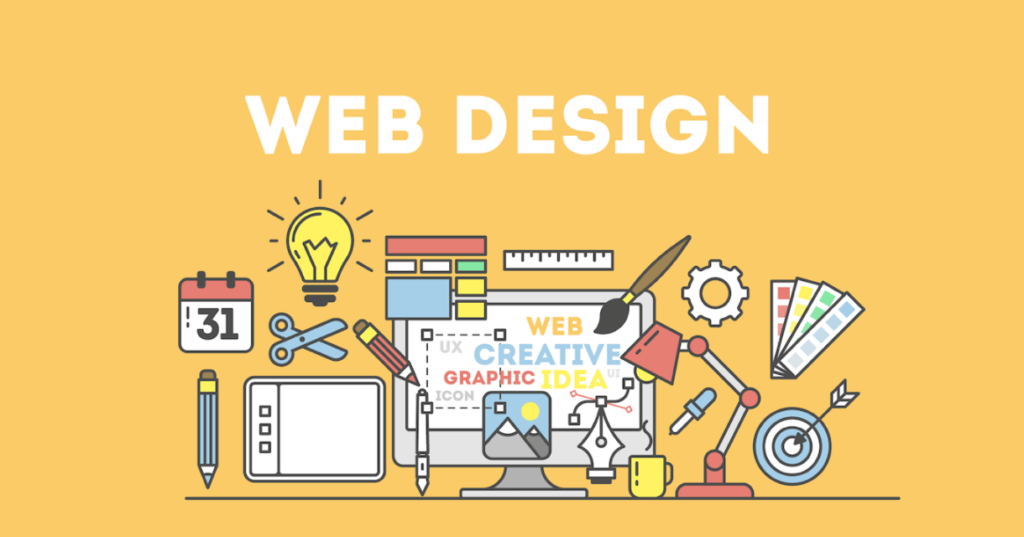
Why Web Design Matters for Conversion Rates
1. First Impressions Count
Your website’s design is often the first thing visitors notice. A professional, visually appealing design can immediately convey trustworthiness and credibility. On the other hand, a cluttered or outdated design may turn potential customers away. The first impression can make or break a visitor’s decision to stay or leave your site.

2. User Experience (UX) and User Interface (UI) Design
Good web design ensures a positive user experience (UX) and an intuitive user interface (UI). UX design focuses on the overall feel of the site and how easy it is for visitors to achieve their goals, while UI design deals with the look and functionality of individual elements. A well-designed UX/UI can simplify navigation, reduce friction points, and guide users towards desired actions, such as making a purchase or signing up for a newsletter.
3. Mobile Responsiveness
With an increasing number of users accessing websites from mobile devices, mobile responsiveness is crucial. A responsive design ensures that your site looks and functions well on all screen sizes, from smartphones to desktops. Google also prioritizes mobile-friendly sites in its rankings, making mobile responsiveness an essential factor for SEO and conversions.
4. Page Speed and Load Time
A well-designed website isn’t just about looks; it also involves performance. Page speed affects user experience and can impact your site’s conversion rate. Slow-loading pages can frustrate users and lead to higher bounce rates. Optimizing images, leveraging browser caching, and using a content delivery network (CDN) are ways to enhance page speed and keep visitors engaged.
5. Clear Call-to-Actions (CTAs)
Effective web design highlights your calls-to-action (CTAs) and makes them easy to find. CTAs should be strategically placed and visually distinct to encourage users to take the next step, whether that’s filling out a form, making a purchase, or contacting your business. The design and placement of CTAs play a crucial role in driving conversions.
6. Trust Signals and Credibility
Incorporating trust signals such as customer testimonials, reviews, security badges, and clear contact information can boost your site’s credibility. A well-designed site integrates these elements seamlessly, helping to build trust with your audience and encourage them to convert.
Optimizing Your Web Design for Better Conversions
Optimizing your web design for better conversions involves improving visual appeal, user experience, and functionality. Key strategies include ensuring mobile responsiveness, enhancing page speed, and placing clear, compelling calls-to-action. Regular A/B testing and user feedback help refine design elements to effectively guide visitors toward desired actions, ultimately boosting conversion rates and achieving business goals.

- Conduct User Research
Understand your audience’s needs, preferences, and pain points. Use tools like surveys, heatmaps, and user testing to gather insights and tailor your design to meet their expectations.
- A/B Testing
Experiment with different design elements, such as CTA buttons, colors, and layouts, to see what resonates best with your audience. A/B testing can provide valuable data on which design choices lead to higher conversion rates.
- Prioritize UX/UI
Invest in high-quality UX/UI design to ensure a smooth and enjoyable user journey. Focus on intuitive navigation, clear and compelling CTAs, and a clean, uncluttered design.
- Optimize for Speed
Regularly check your site’s performance and make necessary improvements to ensure fast load times. Tools like Google PageSpeed Insights can help identify areas for optimization.
- Mobile Optimization
Ensure your design is responsive and provides a seamless experience on mobile devices. Test your site on various devices and screen sizes to confirm that it performs well everywhere.
Conclusion
Effective web design is integral to enhancing your site’s conversion rate. Understanding the role of web design in boosting site conversion rates involves focusing on first impressions, user experience, mobile responsiveness, page speed, CTAs, and trust signals. By addressing these elements, you create a site that not only attracts visitors but also converts them into customers. Regularly optimizing and testing your design based on user feedback and performance metrics will help you maintain a high conversion rate and achieve your business goals.
Read more : Impact of Quality Score on PPC Campaigns
FAQs
To improve your website’s design for better conversions, focus on creating a visually appealing and user-friendly experience. Implement clear and compelling CTAs, ensure mobile responsiveness.
Mobile responsiveness ensures that your website functions well on all types of devices, including smartphones and tablets. With increasing mobile traffic, having a mobile-friendly design is crucial for both user experience and SEO, which in turn impacts your conversion rates.
Page speed affects user experience; slow-loading pages can lead to frustration and higher bounce rates. A fast-loading site keeps visitors engaged and increases the likelihood of conversion.
Trust signals include elements like customer testimonials, reviews, security badges, and clear contact information. They help build credibility and trust with your audience, making them more likely to take action, such as making a purchase or filling out a form.

Alex Mitch
Welcome to my blog! With over 10 years in digital marketing, I’ve seen its incredible impact on smaller businesses. Join me as we explore how digital marketing can grow your audience and boost your business. Whether you’re an experienced entrepreneur or just starting out, you’ll find practical tips and insights to enhance your digital marketing strategies.
Impact of Quality Score on PPC Campaigns
Pay-per-click (PPC) advertising is a powerful tool for driving targeted traffic to your business. A key factor in your ad’s success is the Quality Score. Knowing the impact of Quality Score on your PPC campaigns is crucial, as it helps search engines like Google evaluate the relevance of your ads, landing pages, and keywords.
A high-quality Score can lead to better ad placement and lower costs, while a low score can hurt your campaign’s performance. In this blog, we’ll break down the key aspects of Quality Score and how it can impact your PPC campaigns.
What is a Quality Score?
Quality Score is a metric used by platforms like Google Ads to evaluate the relevance and quality of your PPC ads, keywords, and landing pages. It’s rated on a scale of 1 to 10, where a higher score means better relevance, leading to better ad placement and lower costs.

Factors Affecting Quality Score
Click-Through Rate (CTR)
CTR plays a significant role in determining your Quality Score. It shows how often people click on your ad when it’s displayed. The higher your CTR, the more relevant your ad appears to users.
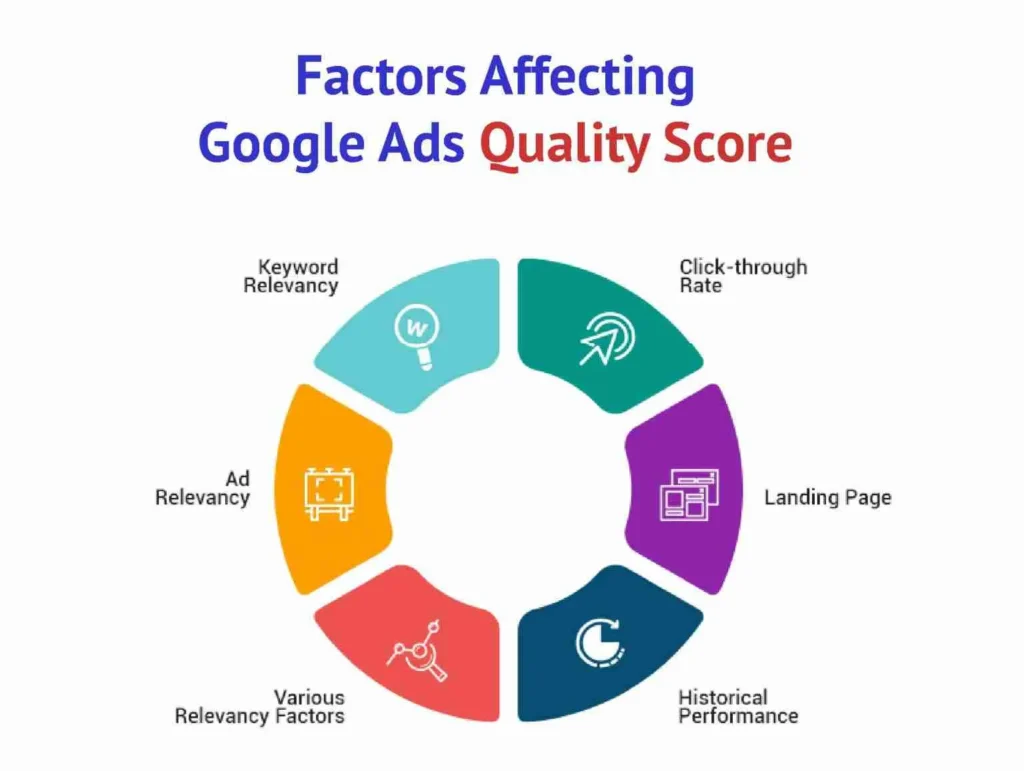
Ad Relevance
Your ad should closely match the intent of the keywords you’re targeting. Irrelevant ads reduce the user experience and can lead to a low Quality Score.
Landing Page Experience
Search engines evaluate the quality of your landing page to ensure it provides value to users. If your page loads slowly or offers little information, your score will suffer.
Keyword Relevance
Make sure your keywords align with the ad copy and landing page content. Poor keyword relevance leads to higher costs and lower ad rankings.
Historical Account Performance
Your account’s historical performance also influences your Quality Score. Consistently high-performance ads are rewarded with better scores.
How Quality Score Impacts PPC Campaigns
A higher Quality Score means you’ll pay less per click. Google rewards advertisers with high scores by lowering their CPC, making it more cost-effective to run PPC campaigns. The impact of Quality Score on PPC campaigns is significant, as it directly influences your ad rank, which determines where your ad appears on the search results page. A high score can push your ad to the top of the results, increasing visibility. The higher your Quality Score, the more likely your ad will be shown to users. Conversely, low scores may prevent your ad from appearing frequently, reducing your potential audience reach.
Higher scores lead to better ad positions. A top placement can significantly boost your CTR and conversions. When your ads are highly relevant and lead to optimized landing pages, users are more likely to convert. High-Quality Scores can enhance the overall user journey, resulting in better conversion rates.
Ways to Improve Your Quality Score
Optimize Your Keywords
Ensure that your keywords are highly relevant to your ad copy and landing pages. Use keyword research tools to find terms that resonate with your audience.

Refine Ad Copy
Write compelling ad copy that directly addresses the user’s search intent. Including keywords in the ad text can improve relevance and CTR.
Enhance Landing Page Quality
Your landing page should provide valuable information, be easy to navigate, and load quickly. A strong landing page encourages users to stay longer and take action, boosting your score.
Monitor and Adjust CTR
Regularly monitor your CTR and adjust ads that are underperforming. Test different ad variations to see which version drives more clicks.
Review Historical Performance
If your account has a poor performance history, consider reviewing past campaigns and identifying areas of improvement. High-performing accounts enjoy better Quality Scores.
Why Quality Score Should be a Priority
Focusing on your Quality Score isn’t just about saving money on your PPC campaigns. It’s about ensuring that your ads resonate with users and provide a positive experience. The better your score, the more effective your ads will be at reaching your target audience and achieving conversions.
Common Mistakes to Avoid with Quality Score
Ignoring Landing Page Quality
Many advertisers focus solely on the ad copy and forget to optimize their landing page. Make sure your page is fast, relevant, and easy to navigate.
Not Targeting the Right Keywords
Using broad or irrelevant keywords can hurt your Quality Score. Invest time in thorough keyword research to ensure your ads match search intent.
Overlooking CTR
Low CTR indicates that your ad isn’t appealing enough to users. Regularly optimize your ad copy and use A/B testing to boost CTR.
Neglecting Ad Extensions
Ad extensions (such as site links, callouts, and structured snippets) make your ad more relevant and informative, potentially improving your score. Make use of them!
Conclusion
Your Quality Score plays a crucial role in determining the effectiveness of your PPC campaigns. A high score leads to better ad positions, lower costs, and higher conversions. By focusing on optimizing your ad copy, keywords, landing pages, and CTR, you can significantly boost your score and improve the overall success of your campaigns.
Remember, the Quality Score isn’t just a number; it’s a reflection of how well your ads are resonating with your audience. Make it a priority in your PPC strategy, and you’ll see the benefits in no time.
Read more : Turning PPC Analytics into Powerful Insights for Optimal Results
FAQs
A Quality Score of 7 or higher is considered good. It indicates that your ads are relevant and well-optimized.
Regularly monitor your Quality Score at least once a week. This helps ensure your ads are performing optimally.
Improving Quality Score takes time, but you can start by optimizing ad copy, keywords, and landing page experience for quicker results.
Yes, a higher Quality Score can lower your cost-per-click (CPC) and increase your ad’s visibility, maximizing your ad budget.
Quality Score varies based on factors like keyword relevance, landing page experience, and CTR, which may differ across campaigns.

Alex Mitch
Welcome to my blog! With over 10 years in digital marketing, I’ve seen its incredible impact on smaller businesses. Join me as we explore how digital marketing can grow your audience and boost your business. Whether you’re an experienced entrepreneur or just starting out, you’ll find practical tips and insights to enhance your digital marketing strategies.
Turning PPC Analytics into Powerful Insights for Optimal Results
Pay-Per-Click (PPC) advertising is a powerful way to drive targeted traffic and see real, measurable results. But the real magic happens when you dive into the data. By taking a closer look at PPC analytics for optimal results, you can unlock the full potential of your campaigns and make smarter, more effective decisions.

In this blog, we will delve into the process of transforming PPC analytics into powerful insights for optimal results.
Understanding PPC Analytics
PPC analytics involves the collection and interpretation of data from your PPC campaigns. This data includes metrics such as click-through rates (CTR), conversion rates, cost-per-click (CPC), and return on ad spend (ROAS). Analyzing these metrics helps in understanding how well your ads are performing and where improvements can be made.
Key Metrics to Monitor

- Click-Through Rate (CTR): This metric measures how often people click on your ad after seeing it. A high CTR typically indicates that your ad is relevant and appealing to your audience.
- Cost-Per-Click (CPC): CPC shows how much you pay for each click on your ad. Lower CPC values are generally desirable, but they must be balanced with the quality of the clicks.
- Conversion Rate: This metric tells you the percentage of clicks that result in a desired action, such as a purchase or sign-up. High conversion rates signify effective ad copy and landing pages.
- Return on Ad Spend (ROAS): ROAS measures the revenue generated for every dollar spent on advertising. A higher ROAS indicates a more effective ad campaign.
- Quality Score: Used by Google Ads, this metric evaluates the relevance and quality of your ads, keywords, and landing pages. A higher Quality Score can lead to lower CPC and better ad placements.
Analyzing PPC Data for Insights
Identify Trends and Patterns
By examining historical data, you can identify trends and patterns that provide insight into your campaign’s performance. Look for patterns in high-performing keywords, times of day when your ads perform best, or demographic segments that show higher engagement. For example, if you notice that your ads perform significantly better during specific times or days, you can adjust your ad scheduling to maximize effectiveness.

Segmentation and Targeting
Segment your PPC data by different dimensions such as geography, device type, or audience demographics. This allows you to tailor your campaigns to specific audience segments that show higher engagement or conversion rates. For instance, if your data reveals that mobile users have a higher conversion rate than desktop users, consider optimizing your mobile ad strategy to capitalize on this trend.
Optimize Ad Copy and Creative
Analyze which ad copies and creatives lead to the highest CTR and conversion rates. Testing different versions of ad copy (A/B testing) and creatives can reveal which messages resonate best with your audience. For example, you might find that ads with a specific call-to-action perform better than others, indicating that similar wording should be used in future campaigns.
Evaluate Landing Page Performance
Your landing page plays a crucial role in converting clicks into actions. Use analytics to assess the performance of your landing pages in terms of bounce rate, average session duration, and conversion rate. If you find that a particular landing page has a high bounce rate, it may be time to revise its content or design to better align with user expectations and improve conversions.
Monitor Competitor Performance
Keep an eye on competitor activities and performance metrics. Tools like SEMrush or SpyFu can provide insights into how your competitors are performing and which strategies they are employing. This competitive intelligence can help you adjust your own strategies to gain an edge.
Turning Insights into Actionable Strategies
- Budget Allocation
Allocate your budget based on the performance insights gathered from your analytics. Invest more in high-performing keywords and campaigns while reducing spending on underperforming areas. Regularly review and adjust your budget to ensure optimal use of your advertising dollars.

- Refine Keyword Strategy
Use insights from keyword performance to refine your keyword strategy. Focus on high-converting keywords and consider adding negative keywords to filter out irrelevant traffic. Regular keyword research and adjustments can help you maintain an effective PPC strategy.
- Enhance Ad Targeting
Leverage audience segmentation and targeting insights to refine your ad targeting. Implement remarketing strategies to re-engage users who have previously interacted with your ads or website but did not convert.
- Improve Ad Quality
Use insights from Quality Score and ad performance data to continuously improve the quality of your ads. Ensure that your ads are highly relevant to the keywords and landing pages they are associated with to enhance overall campaign effectiveness.
Conclusion
Turning PPC analytics into actionable insights is a vital process for achieving optimal results in your advertising campaigns. By thoroughly analyzing key metrics, identifying trends, optimizing ad copy and landing pages, and making data-driven adjustments, you can significantly enhance the performance of your PPC campaigns.
Remember that PPC is not a one-time setup but an ongoing process of refinement and optimization. Regularly review your analytics and stay agile to adapt to changes in user behavior and market conditions.
Read more : Creating A High-Performing PPC Campaign from Scratch
FAQs
It’s essential to review your PPC analytics regularly. For high-traffic campaigns, weekly reviews can be beneficial to make timely adjustments. For smaller campaigns, a monthly review might suffice. Regular monitoring helps in identifying trends and making necessary optimizations.
A/B testing, or split testing, involves creating two or more variations of an ad to determine which performs better. By comparing metrics such as CTR and conversion rate, you can identify the most effective ad copy or creative elements.
Improving Quality Score involves enhancing the relevance and quality of your ads, keywords, and landing pages. Focus on creating highly relevant ad copy and well-targeted keywords.
Several tools can help with PPC analytics, including Google Analytics, Google Ads, SEMrush, and SpyFu. These tools provide valuable data and insights to help you manage and optimize your PPC campaigns effectively.

Alex Mitch
Welcome to my blog! With over 10 years in digital marketing, I’ve seen its incredible impact on smaller businesses. Join me as we explore how digital marketing can grow your audience and boost your business. Whether you’re an experienced entrepreneur or just starting out, you’ll find practical tips and insights to enhance your digital marketing strategies.
Creating A High-Performing PPC Campaign from Scratch
Creating a high-performing PPC (pay-per-click) campaign from scratch may seem overwhelming, but by following a structured approach, you can set yourself up for success. In this guide, we will delve into each step of creating a PPC campaign, focusing on strategies to optimize performance and achieve your advertising goals.

Define Your Goals
Before launching your PPC campaign, it’s essential to define clear, measurable objectives. Start by asking yourself what you aim to accomplish with your campaign. Are you looking to drive more traffic to your website, generate leads, or boost sales?

Establishing specific goals will guide the direction of your campaign and help you determine which key performance indicators (KPIs) to monitor. Common KPIs include click-through rate (CTR), conversion rate, and cost per acquisition (CPA). By setting these parameters, you can measure the success of your campaign and make informed decisions to optimize performance.
Conduct Thorough Keyword Research
Keyword research is the foundation of a high-performing PPC campaign. Begin with a list of seed keywords that are directly related to your business or product. These are broad terms that encapsulate what you offer. Use keyword research tools such as Google Keyword Planner, SEMrush, or Ahrefs to expand this list and gain insights into keyword volume, competition, and potential costs.
- Start with Seed Keywords: Begin by creating a list of seed keywords that are directly related to your business or product. These broad terms will serve as the basis for finding more specific and relevant keywords.

- Utilize Keyword Research Tools: Employ tools like Google Keyword Planner, SEMrush, or Ahrefs to expand your seed keywords. These tools provide valuable data on keyword search volume, competition levels, and estimated costs.
- Analyze and Refine: Review the data to identify high-potential keywords with a balance of search volume and competition. Refine your keyword list by focusing on terms that align closely with your target audience’s search intent and your campaign objectives.
Develop Compelling Ad Copy
The effectiveness of your PPC campaign heavily relies on compelling ad copy that captures the attention of potential customers. Craft engaging headlines that incorporate primary keywords and are designed to stand out.
The description should highlight the unique selling points and benefits of your product or service, addressing any pain points or needs your audience might have.
A strong call to action (CTA) is crucial; it should prompt users to take the desired action, whether it’s making a purchase, signing up for a newsletter, or requesting a quote
Optimize Landing Pages
Once users click on your ad, they land on your landing page, which is where the conversion happens. Therefore, optimizing this page is critical for campaign success. Ensure that the content on your landing page is highly optimized and relevant to the ad copy and targeted keywords . The design should be clean and focused, with a clear and prominent CTA.
- Ensure Relevance: Align content with ad copy and targeted keywords.
- Create a Clean Design: Maintain a simple and focused layout.
- Highlight a Prominent CTA: Place a clear and compelling call to action.
- Improve Page Load Speed: Optimize for quick loading times.
- Ensure Mobile-Friendliness: Design for responsiveness on all devices.
Set Up Targeting and Bidding Strategies
Targeting and bidding strategies are essential components of a PPC campaign that can greatly impact its success. Start by defining your audience through demographic, geographic, and behavioral targeting options.
This will help you reach individuals who are most likely to be interested in your offerings. Next, choose a bidding strategy that aligns with your campaign goals. Options include manual CPC (cost per click), enhanced CPC, and automated bidding strategies.
Implement Tracking and Analytics
To gauge the effectiveness of your PPC campaign and make data-driven decisions, implementing robust tracking and analytics is crucial. Set up conversion tracking through platforms like Google Ads to monitor how many conversions (such as sales or sign-ups) result from your ad clicks.
Integrate your PPC account with Google Analytics to gain deeper insights into user behavior and campaign performance. Regular reporting is also important; create reports to track your KPIs and identify areas for improvement.
Continuously Optimize
Optimization is an ongoing process that involves regularly reviewing and refining your PPC campaign. Conduct A/B testing to experiment with different ad copies, landing pages, and CTAs to determine what resonates best with your audience. Continuously update your keyword list based on performance data and emerging trends to ensure you remain competitive. Adjust your bids as needed, focusing on keywords and audience segments that deliver the best results. By staying proactive and responsive to performance metrics, you can continually improve your campaign and achieve better outcomes over time.
Conclusion
Building a high-performing PPC campaign from scratch involves a series of strategic steps, from setting clear objectives and conducting keyword research to crafting compelling ad copy and optimizing landing pages. By carefully planning each element and continuously monitoring and refining your campaign, you can achieve significant results.
Remember, the key to PPC success lies not just in the initial setup but in ongoing optimization and adaptation to meet your goals and stay ahead of the competition. With a structured approach and a commitment to continuous improvement, you can create a high-performing PPC campaign that drives traffic, generates leads, and boosts conversions effectively.
Read more : Importance of Backlinks and How to Build Them
FAQs
CPC (Cost Per Click) refers to the amount you pay each time someone clicks on your ad. CPA (Cost Per Acquisition) is the cost you incur for each conversion or sale resulting from your ad clicks.
To improve your Quality Score, focus on enhancing the relevance of your ad copy, optimizing your landing pages, and ensuring a positive user experience.
Ad extensions are additional pieces of information that can appear alongside your ads, such as phone numbers, extra links, or location details
It’s recommended to review your PPC campaign performance at least once a week. Regular analysis allows you to track key metrics, identify trends, and make necessary adjustments to optimize your campaign’s effectiveness.

Alex Mitch
Welcome to my blog! With over 10 years in digital marketing, I’ve seen its incredible impact on smaller businesses. Join me as we explore how digital marketing can grow your audience and boost your business. Whether you’re an experienced entrepreneur or just starting out, you’ll find practical tips and insights to enhance your digital marketing strategies.
Importance of Backlinks and How to Build Them
In the realm of SEO (Search Engine Optimization), importance of backlinks cannot be overstated. Backlinks, or inbound links, are links from other websites that point to your site. They play a significant role in determining your website’s authority, credibility, and ranking on search engine results pages (SERPs).
In this blog, we’ll explore the importance of backlinks for SEO and provide actionable strategies for building them effectively.
Why Backlinks Matter
Backlinks matter because they signal to search engines that your content is valuable and trustworthy, enhancing your site’s authority and ranking. They also drive targeted referral traffic from other reputable sites. Additionally, backlinks help search engines discover and index your pages faster.

Overall, they play a crucial role in boosting your website’s visibility and credibility. Below is a detailed explanation
- Enhanced Search Engine Rankings: Search engines like Google view backlinks as endorsements of your content. When reputable sites link to yours, it signals that your content is valuable and trustworthy. This endorsement can significantly improve your site’s rankings on SERPs.
- Increased Referral Traffic: Backlinks from high-traffic websites can drive referral traffic to your site. This traffic is often highly targeted, as users coming from these links are already interested in your niche or industry.
- Improved Domain Authority: Backlinks contribute to your site’s domain authority (DA), which is a measure of your website’s overall strength and trustworthiness. A higher DA generally correlates with better search engine rankings.
- Faster Indexing: Search engines use backlinks to discover new pages on your site. Quality backlinks can help search engines crawl and index your pages more efficiently.
How to Build Backlinks Effectively
Building high-quality backlinks requires a strategic approach. Here are some effective methods to help you get started:

Create High-Quality Content:
Exceptional content—such as detailed blog posts, engaging infographics, informative videos, and thorough research studies—is crucial for attracting backlinks. When your content provides real value and insights, it naturally draws links from other sites, enhancing your site’s authority and boosting your SEO rankings. Focus on creating content that stands out and resonates with your audience.
Guest Blogging:
Writing guest posts for reputable blogs in your industry highlights the importance of backlinks by earning valuable links that enhance your online credibility. Make sure your posts offer fresh, insightful content and include a strategic link back to your site. Cultivating relationships with blog editors can boost your chances of being featured and improve both the quality and quantity of your backlinks.
Outreach and Relationship Building:
Engage with industry influencers, bloggers, and journalists through tailored outreach efforts. Provide them with valuable content or insights that they can include in their articles, which can result in backlinks to your site. Building genuine relationships with these individuals not only fosters future link-building opportunities but also strengthens your industry presence.
Leverage Social Media:
Boost your content’s visibility by actively promoting it on social media platforms. Sharing and engaging with your audience can drive more traffic to your content and attract attention from other websites and bloggers. These external sites may find your content valuable and link back to it, which not only enhances your reach but also contributes to better search engine rankings through quality backlinks.
Broken Link Building:
Utilize tools like Check My Links or Broken Link Checker to identify broken links on relevant websites. Contact these site owners to suggest your content as a replacement for their dead links. This method provides value to their site by fixing broken links and earns you a backlink. It’s an effective way to build relationships and enhance your own site’s authority and traffic.

Competitor Analysis:
Analyze your competitors’ backlink profiles using tools such as Ahrefs or SEMrush to see where their backlinks are coming from. This research helps you identify high-value sites and opportunities for your own link-building efforts.
By targeting similar sources and strategies, you can replicate their successes, improving your own backlink profile and increasing your website’s visibility and search engine ranking.
Create Linkable Assets:
Create linkable assets by developing high-quality, valuable resources such as detailed guides, interactive tools, or in-depth studies tailored to your target audience. These assets should address key industry topics or provide unique insights and solutions.
By offering comprehensive and useful content, you increase the likelihood of other websites and blogs referencing and linking to your resources.
This not only enhances your site’s authority and credibility but also drives more traffic and improves your search engine rankings. Investing in well-crafted linkable assets can significantly boost your backlink profile and establish your site as a trusted resource in your industry.
Conclusion
The importance of backlinks can’t be overlooked in SEO; they’re key to boosting your site’s visibility and credibility. By creating great content, guest blogging, building strong connections, and using smart backlink strategies, you can seriously improve your site’s performance on search engines.
Remember, quality always outweighs quantity when it comes to backlinks. Prioritize earning links from reputable sources to build a robust and sustainable backlink profile.
Read more : Optimize Your Site’s Internal Linking To Improve SEO
FAQs
The number of backlinks required to rank well can vary depending on the competition in your niche. Generally, focusing on acquiring high-quality, relevant backlinks from authoritative sites will be more effective than simply aiming for a high quantity of links.
No, not all backlinks are equal. Backlinks from authoritative, high-quality websites have a more significant impact on your SEO than links from low-quality or irrelevant sites. Focus on obtaining backlinks from reputable sources within your industry.
To avoid harmful backlinks, regularly monitor your backlink profile using tools like Google Search Console or Ahrefs. Disavow any low-quality or spammy links that could potentially harm your site’s SEO.
Buying backlinks is against Google’s guidelines and can result in penalties for your site. Instead, focus on earning backlinks through legitimate methods such as creating valuable content and engaging with industry influencers.

Alex Mitch
Welcome to my blog! With over 10 years in digital marketing, I’ve seen its incredible impact on smaller businesses. Join me as we explore how digital marketing can grow your audience and boost your business. Whether you’re an experienced entrepreneur or just starting out, you’ll find practical tips and insights to enhance your digital marketing strategies.
Optimize Your Site’s Internal Linking To Improve SEO
Internal linking means connecting pages within your website, and it’s key to improve SEO. It helps make navigation smoother, shares page authority, and lets search engines find and index your content more easily. This guide will walk you through practical strategies for optimizing internal links to boost both your site’s search rankings and user experience.
What is Internal Linking?
Internal linking is the practice of creating hyperlinks that connect different pages within the same website. These links ensure easier navigation for users, help spread page authority across your site, and assist search engines in understanding your content’s structure and hierarchy.
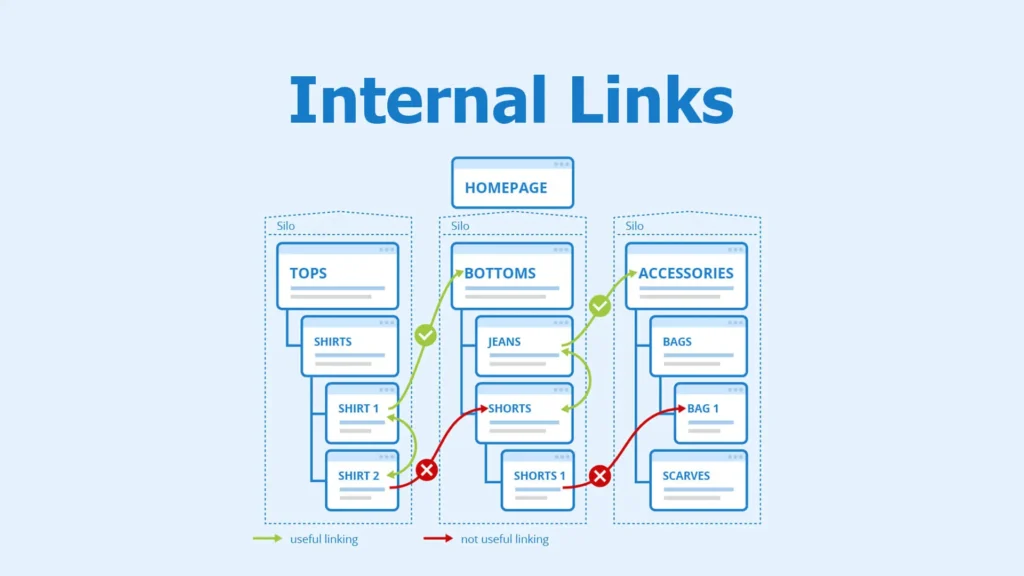
Why is Internal Linking Important for SEO?
Internal linking enhances navigation by guiding users to relevant content, which boosts their experience and ultimately improve SEO. It also helps distribute page authority throughout the site, aiding in better search engine rankings.

Additionally, it supports efficient content indexing by search engines and can reduce bounce rates.
Create a Clear Site Structure
A well-organized site structure makes it easier for both users and search engines to navigate your content. Establish a logical hierarchy, starting with the homepage linking to major categories, which then link to subcategories and individual pages, ensuring a smooth and intuitive user experience.
Use Descriptive Anchor Text
Anchor text is the clickable part of a hyperlink, and it should be descriptive and relevant to the linked page’s content. Using precise and contextually appropriate anchor text improves user understanding and helps search engines better grasp the content and relevance of the linked pages.
- Enhances User Understanding: Descriptive anchor text clearly indicates what users can expect when they click a link, improving their navigation experience and making it easier to find relevant information.
- Improves Search Engine Relevance: Search engines use anchor text to understand the content and context of the linked page, helping to better index and rank your pages based on relevant keywords and topics.
- Boosts Click-Through Rates: When anchor text is specific and informative, it attracts more clicks from users interested in the topic, leading to increased traffic and engagement on your linked pages.
Link to Relevant Content
Ensure that internal links connect to content that is contextually related. This relevance not only enhances user experience by providing additional valuable information but also helps search engines recognize the connection between different pages, improving the overall SEO of your site.
Distribute internal links evenly across your site to avoid overwhelming any single page. A balanced approach ensures that page authority is shared appropriately, which helps all linked pages achieve better search engine rankings and prevents any page from becoming a link hoarder.
| Point | Explanation |
| Contextual Relevance | Linking to related content enhances user experience by providing additional, valuable information. |
| Enhanced User Experience | Users find more relevant content easily, leading to better engagement and satisfaction. |
| Search Engine Recognition | Helps search engines understand how pages relate to each other, improving indexing and rankings. |
| Balanced Link Distribution | Distributes page authority evenly, preventing any single page from becoming too dominant. |
| Prevents Link Hoarding | Ensures no single page is overloaded with internal links, promoting a more equitable link structure. |
Regularly Update and Audit Internal Links
Regular audits of internal links are crucial to maintain site integrity. Over time, some links may become outdated or broken. Regularly checking and updating these links ensures that users and search engines have a seamless experience, preventing errors and improving overall site functionality.
Breadcrumbs are a navigational aid that shows users their location within the site’s hierarchy. They provide additional internal linking opportunities and help users understand their current position on the site, enhancing usability and allowing search engines to better grasp site structure.
Utilize Contextual Links
Contextual links are embedded within the body of your content, providing additional relevant information. These links are valuable for improving user engagement and helping search engines understand the content relationships, as they offer deeper insights into the context and relevance of the linked pages.
A hierarchical linking structure organizes your site like a pyramid, with the homepage linking to major categories, which in turn link to subcategories and individual pages. This structure helps search engines understand the importance and relevance of each page, improving indexing and search visibility.
Mistakes to Avoid When Optimizing website Internal Linking
When improving a website’s internal linking, several common mistakes can undermine your efforts. One major error is creating an excessive number of links on a single page, which can overwhelm users and dilute the value of each link.

Another mistake is neglecting to use descriptive and relevant anchor text, which can confuse users and search engines about the content’s context. Additionally, failing to update internal links regularly can lead to broken links and a poor user experience. Finally, not considering the overall site hierarchy can disrupt the logical flow of content, negatively impacting SEO.
- Overloading Pages with Links: Excessive internal links can clutter a page and diminish the value of each link. Aim for a balanced number of links to maintain clarity and effectiveness.
- Ignoring Descriptive Anchor Text: Using vague or generic anchor text confuses both users and search engines. Always use clear and relevant text that accurately describes the linked content.
- Neglecting Regular Updates: Outdated or broken links can frustrate users and harm SEO. Regularly audit and update your internal links to ensure they remain functional and relevant.
Conclusion
Optimizing internal linking is a fundamental yet powerful SEO strategy that significantly enhances your website’s performance. By implementing internal linking to improve SEO, you create a clear site structure, use descriptive anchor text, and link to relevant content. This boosts both user experience and search engine visibility. Regular audits and a balanced distribution of internal links ensure your site remains functional and effective in guiding users and search engines. Implementing these strategies will lead to better navigation, higher engagement, and improved search rankings, ultimately contributing to your website’s overall success.
Read more : SEO Friendly Content Creation Strategies
FAQS
To determine which pages to link internally, focus on relevance and user experience. Link to content that is closely related to the topic of the current page. Use tools like Google Analytics to identify popular pages and ensure they are well-connected.
It is advisable to audit your internal links at least every 3-6 months. Regular audits help you identify and fix broken or outdated links, ensuring that users have a seamless experience and that search engines can effectively crawl and index your site.
Yes, internal linking can negatively impact SEO if not done correctly. Overloading pages with too many links can dilute link equity and confuse users. Using irrelevant anchor text or neglecting to update links can also harm SEO.
Use descriptive and relevant anchor text, link to related content, ensure a balanced distribution of links, and regularly audit your internal links to fix any broken or outdated links.

Alex Mitch
Welcome to my blog! With over 10 years in digital marketing, I’ve seen its incredible impact on smaller businesses. Join me as we explore how digital marketing can grow your audience and boost your business. Whether you’re an experienced entrepreneur or just starting out, you’ll find practical tips and insights to enhance your digital marketing strategies.
SEO Friendly Content Creation Strategies
Creating SEO friendly content involves several crucial steps to ensure your blog ranks well in search engine results and attracts your target audience. Start by conducting thorough keyword research to identify relevant terms and phrases your audience is searching for.
Tools like Google Keyword Planner or SEMrush can help you find these keywords. Incorporate them naturally throughout your content, avoiding keyword stuffing, to align with user intent and improve search visibility.
What is SEO Friendly Content
SEO friendly content is designed to improve a website’s visibility in search engine results. It includes relevant keywords, engaging and valuable information, and follows best practices for on-page SEO.

This type of content is structured to attract both search engines and users, increasing the chances of higher rankings and better user engagement. Effective SEO friendly content also focuses on readability and relevance to the target audience.
- Relevant Keywords: Incorporate keywords that your target audience is likely to search for. This helps search engines understand the topic and improves your content’s visibility.
- Engaging and Valuable Information: Provide high-quality content that answers users’ queries and offers value. Engaging content keeps users on your page longer, which can boost rankings.
- Proper Structure and Readability: Use headings, subheadings, and bullet points to make the content easy to read. Well-structured content improves user experience and helps search engines index your page effectively.
Create a Compelling Title
A compelling title is essential for capturing attention and improving your content’s search engine ranking. Ensure that your main keyword appears in the title to boost visibility. Craft a title that is both engaging and descriptive to encourage clicks.
Aim for a title length of 50-60 characters to ensure it displays well in search results and accurately reflects the content of your blog.
Write High-Quality Content
High-quality content is the backbone of SEO-friendly writing. Start with a strong introduction that hooks your readers and outlines what they will learn. Organize your content with clear subheadings and bullet points to enhance readability.
Use primary and secondary keywords naturally throughout the text, but focus on providing value through in-depth insights and solutions to common questions in your niche. Well-written content often ranks better and keeps readers engaged.
| Aspect | Explanation |
| Strong Introduction | Begin with a compelling introduction that grabs the reader’s attention and outlines the main points of the content. This sets expectations and encourages readers to continue. |
| Clear Organization | Structure your content with distinct subheadings and bullet points to break up text and improve readability. This makes it easier for readers to find specific information quickly. |
| Natural Keyword Use | Incorporate primary and secondary keywords seamlessly within the text. Avoid keyword stuffing; instead, focus on contextually relevant usage to maintain a natural flow. |
| In-Depth Insights | Provide thorough and well-researched information that addresses common questions or problems in your niche. This demonstrates expertise and adds value to the reader. |
| Engaging and Well-Written | Craft content that is both engaging and well-written, with a clear, conversational tone. High-quality writing helps retain readers’ interest and improves the chances of higher search rankings. |
Optimize Meta Descriptions and Tags
Meta descriptions and tags play a crucial role in SEO. Write a compelling meta description that summarizes your blog post in 150-160 characters, including your primary keyword. This description helps improve click-through rates from search engine results.

Additionally, use descriptive alt tags for any images included in your content, incorporating relevant keywords to enhance visibility and accessibility.
Include Internal and External Links
Including internal and external links in your content can significantly enhance its SEO performance. Internal links direct readers to other relevant pages or posts on your website, helping to keep them engaged and reducing bounce rates.
External links to authoritative sources provide additional value and credibility, which can also improve your content’s search engine ranking.
Ensure Mobile-Friendliness
Mobile-friendliness is essential for SEO as a significant portion of users access content from mobile devices. Ensure that your blog is optimized for mobile viewing with a responsive design that adjusts to different screen sizes.
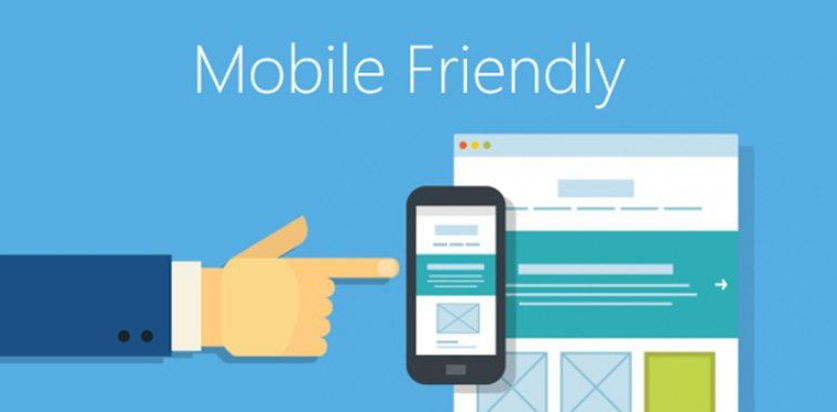
Additionally, optimize your page load speed by compressing images and reducing unnecessary scripts, as faster loading times enhance user experience and search rankings.
Optimize for Readability
Optimizing readability is key to engaging your audience effectively. Use short paragraphs, clear subheadings, and bullet points to make your content easy to scan and read. Write in a conversational tone to connect with readers and include clear calls-to-action (CTAs) to guide them on what to do next, such as subscribing to a newsletter or contacting you for more information.
Analyze and Improve
Regularly analyzing and improving your content is vital for maintaining its SEO performance. Use tools like Google Analytics to track how your content performs and identify areas for improvement.
Refresh old posts with updated information and keywords to keep them relevant and effective in driving traffic to your site. Regular updates help ensure that your content remains valuable and competitive in search engine results.
Conclusion
Creating SEO friendly content requires a strategic approach that includes keyword research, crafting compelling titles, writing high-quality content, and optimizing various elements like meta descriptions and links.
By ensuring your content is mobile-friendly, readable, and regularly updated, you can enhance its visibility and engagement. Regularly analyzing performance and making improvements will help maintain your content’s effectiveness and search engine ranking over time.
Read more : Impact of Storytelling on SEO and Content Strategy
FAQs
Keyword research involves identifying relevant search terms to create content that aligns with what users are searching for, improving visibility and relevance in search results.
Regular updates are recommended to keep content fresh and relevant. Aim to review and refresh old posts at least every 6-12 months.
A meta description is a brief summary of your content that appears in search results. Write it with the primary keyword, ensuring it’s engaging and within 150-160 characters.
Improve readability by using short paragraphs, clear subheadings, bullet points, and a conversational tone. Avoid jargon and keep sentences concise.

Alex Mitch
Welcome to my blog! With over 10 years in digital marketing, I’ve seen its incredible impact on smaller businesses. Join me as we explore how digital marketing can grow your audience and boost your business. Whether you’re an experienced entrepreneur or just starting out, you’ll find practical tips and insights to enhance your digital marketing strategies.
Impact of Storytelling on SEO and Content Strategy
In the world of digital marketing, storytelling has evolved from a creative approach to a strategic tool. Integrating storytelling into your content not only engages your audience but also improves your search engine rankings.
This blog will explore how storytelling influences SEO and content strategy, providing actionable insights to help you leverage this powerful tool.
Understanding Storytelling
Storytelling in content strategy refers to using narrative techniques to convey a message or brand story in a way that resonates with the audience. It’s about creating content that is not just informative but also emotionally engaging, making it memorable and impactful.

Storytelling plays a crucial role in SEO by keeping users engaged on your page longer, reducing bounce rates, and increasing the likelihood of shares and backlinks. These factors contribute to better search engine rankings, making storytelling a valuable asset in your SEO strategy.
Enhances User Experience
A well-told story creates a seamless and enjoyable user experience. By presenting information in a narrative format, you guide your readers through the content, making it easier to digest and more likely to be remembered. This positive user experience is a key factor in SEO, as search engines prioritize websites that offer high-quality, user-friendly content.
Content that tells a story is more likely to engage readers, encouraging them to spend more time on your site. This increased engagement signals to search engines that your content is valuable, which can lead to higher rankings.
- Seamless Content Flow
A well-crafted story ensures a smooth and enjoyable reading experience, guiding users through your content in a natural way. This narrative approach makes the information easier to digest and more memorable. - Improved Engagement
Storytelling captures readers’ attention, encouraging them to spend more time on your site. This increased engagement signals to search engines that your content is valuable, potentially boosting your rankings. - Positive SEO Impact
Search engines prioritize websites that offer high-quality, user-friendly content. By enhancing user experience through storytelling, you can improve your site’s SEO performance and overall visibility.
Develops Emotional Connections
Storytelling allows you to connect with your audience on an emotional level, fostering trust and loyalty. When readers feel a connection to your content, they’re more likely to return to your site, subscribe to your newsletter, and share your content with others.
A compelling story is more likely to be shared on social media, amplifying your content’s reach and driving more traffic to your site. Social signals, such as likes, shares, and comments, are increasingly considered by search engines when ranking content.
Supports Brand Consistency
Consistent storytelling across your content helps build a strong brand identity. When your audience recognizes your brand’s voice and message, they’re more likely to engage with your content and become loyal customers.
Stories break down complex information into easily digestible pieces, making your content more readable. Improved readability can lead to better user engagement and higher rankings on search engine results pages (SERPs).
Storytelling and Keyword Integration
Storytelling doesn’t mean neglecting SEO basics. Integrate your keywords naturally within your story to ensure your content remains optimized for search engines. A well-crafted narrative can incorporate keywords seamlessly without compromising the flow of the story.
Shareable content is often content that tells a story. People love sharing stories that resonate with them, which can increase your content’s visibility and attract more backlinks, boosting your SEO efforts.
Enhances Content Diversity
Incorporating storytelling into your content strategy allows for greater diversity in content types, such as blog posts, videos, podcasts, and social media updates. This variety can attract a wider audience and improve your overall SEO performance.
Storytelling can be an effective way to target long-tail keywords, which are often more specific and less competitive. By crafting stories around these keywords, you can attract a more targeted audience and improve your chances of ranking higher on SERPs.
Measuring the Impact of Storytelling on SEO
To measure the impact of storytelling on your SEO strategy, track key metrics such as time on page, bounce rate, social shares, and backlinks. These metrics will give you insights into how well your stories are resonating with your audience and contributing to your SEO goals.
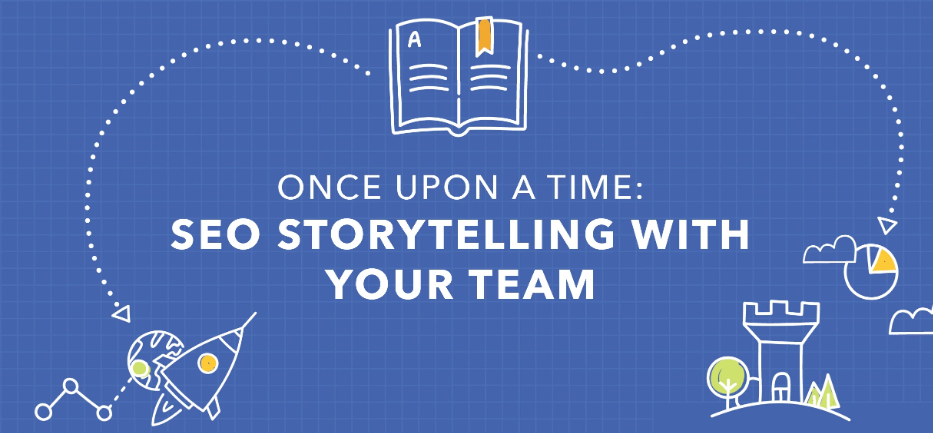
Common Mistakes to Avoid in Storytelling for SEO
While storytelling is powerful, there are common mistakes to avoid, such as overloading your content with keywords or neglecting the narrative flow. Balance is key to ensuring your stories are both engaging and optimized for search engines.
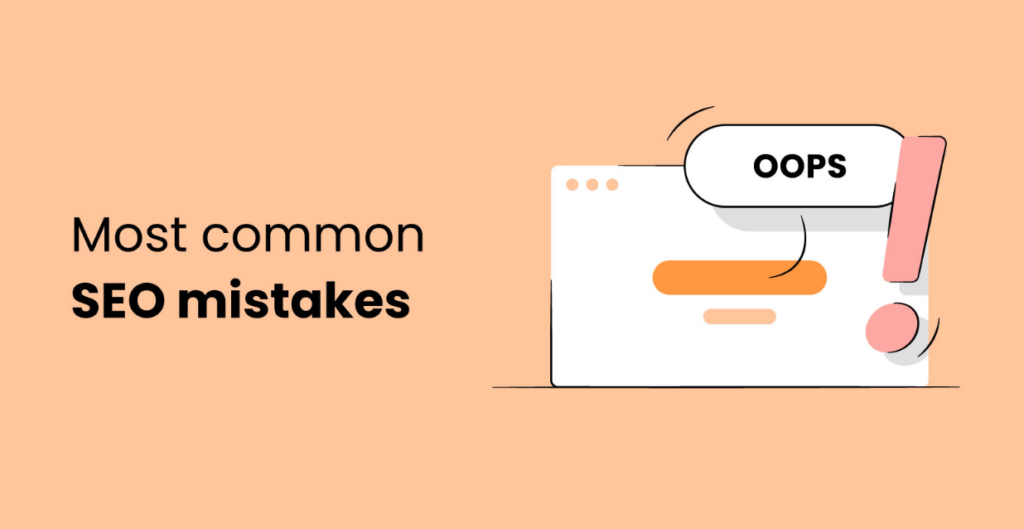
Keyword Overload
Overstuffing your content with keywords can disrupt the narrative flow, making your story feel forced and unnatural. Instead, focus on integrating keywords seamlessly to maintain both readability and SEO effectiveness.
Ignoring the Narrative Flow
Neglecting the natural progression of your story can confuse readers and reduce engagement. Ensure your content follows a logical sequence that guides the reader smoothly from start to finish.
Overlooking Audience Relevance
Creating stories that don’t resonate with your target audience can lead to disengagement. Tailor your storytelling to address the needs, interests, and pain points of your audience.
Conclusion
Storytelling is more than just a creative approach—it’s a strategic tool that can significantly enhance your SEO and content strategy. By engaging your audience, building emotional connections, and encouraging social sharing.
Storytelling helps improve your search engine rankings and brand visibility. Incorporate storytelling into your content to create a more memorable and impactful user experience, and watch your SEO performance soar.
Read more : Benefits of Integrating Traditional and Digital Marketing Channels
FAQs
Storytelling enhances SEO by increasing user engagement, reducing bounce rates, and encouraging social sharing, all of which contribute to better search engine rankings.
Yes, storytelling can be incorporated into various content types, including blog posts, videos, social media updates, and more.
Absolutely. Keywords should be naturally integrated into your stories to ensure the content remains optimized for search engines.
Track metrics such as time on page, bounce rate, social shares, and backlinks to measure the effectiveness of storytelling in your SEO strategy.

Alex Mitch
Welcome to my blog! With over 10 years in digital marketing, I’ve seen its incredible impact on smaller businesses. Join me as we explore how digital marketing can grow your audience and boost your business. Whether you’re an experienced entrepreneur or just starting out, you’ll find practical tips and insights to enhance your digital marketing strategies.
Benefits of Integrating Traditional and Digital Marketing Channels
As we move into 2024, digital marketing has truly become a game-changer for generating revenue. There was a time when agencies mainly used print media—things like radio, TV ads, mail campaigns, and billboards—to get their message out. Now, with the rise of social media platforms and search engines, we’ve seen a shift towards online marketing. But that doesn’t mean traditional methods have faded away. By integrating traditional and digital marketing, brands can create a well-rounded strategy that combines the best of both worlds, keeping both approaches relevant and impactful.
This article will explain how combining both marketing methods can impact your business
Integrating Traditional And Digital Marketing Channels
Every individual uses the internet when it comes to buying or searching for any product/service. Allowing brands to grab their attention through numerous paid and organic marketing tactics like running ads. However, combining both offline and online marketing can make it easy for a business to reach a wider audience.

It helps a business use the strengths of both traditional and digital marketing to raise brand awareness, increase audience engagement and drive huge ROI. This approach is also known as a 360-degree marketing strategy.

Let’s explore the advantages
Wider Audience Reach
Reaching a maximum audience is the key to success for any digital marketing agency. The more audience you have, the more your chances of sales will increase. Some companies use social media platforms to engage with people while others run paid ads.
Through combining both online and offline channels you have the option to target a wider audience. When your business is sending emails along with giving ads in newspapers. This will help you to cover more audiences and generate high-quality leads by developing lasting relationships.
Enhanced Customer Engagement
Traditional marketing channels often lack the immediate feedback that digital channels provide. By integrating the two, you can create a more interactive experience for your customers. For example, you can run a TV ad that encourages viewers to visit your website or social media page for exclusive content.
This integration allows you to engage with your audience across multiple touchpoints, increasing their involvement with your brand.
Improved ROI
Combining traditional and digital marketing channels can lead to a higher return on investment (ROI). Traditional marketing methods can be expensive, but when paired with cost-effective digital strategies, you can optimize your budget.
For instance, you can use digital analytics to track the effectiveness of a print campaign and adjust your strategy accordingly. This data-driven approach ensures that your marketing efforts are both efficient and effective.
Better Data Collection and Analysis
Digital marketing channels offer valuable insights into customer behavior, preferences, and demographics. When integrated with traditional marketing, you can collect data from multiple sources, providing a comprehensive view of your audience.
This data allows you to fine-tune your marketing strategies, create personalized content, and make informed decisions that drive better results.
Cross-Channel Promotion
Integration allows for seamless cross-channel promotion. For example, a print ad can include a QR code that directs customers to your online store, or a social media post can promote an upcoming TV commercial. This cross-promotion not only increases engagement but also enhances the overall effectiveness of your marketing campaigns by driving traffic between channels.
Targeted Campaigns
While traditional marketing often targets a broad audience, digital marketing allows for more targeted campaigns. By integrating both, you can leverage the broad reach of traditional marketing while using digital tools to target specific demographics.
This ensures that your campaigns resonate with the right audience, leading to higher conversion rates.
Greater Flexibility and Adaptability
Digital marketing channels offer greater flexibility and adaptability compared to traditional methods. By integrating the two, you can quickly respond to market changes and customer feedback. For example, if a print campaign isn’t performing well, you can use digital channels to make real-time adjustments.
Such as updating content or changing the target audience. This flexibility helps you stay competitive and relevant in a rapidly changing market.
Comprehensive Marketing Strategy
An integrated approach allows you to create a more comprehensive marketing strategy. By leveraging the strengths of both traditional and digital channels, you can cover all bases and ensure that your message reaches your audience at every stage of the buyer’s journey.

This holistic approach increases the chances of converting prospects into loyal customers. However, you have to keep a check on both marketing channels’ progress and make necessary adjustments.
Strengthened Customer Relationships
Integrating traditional and digital marketing channels helps build stronger relationships with your customers. Traditional channels, like direct mail or phone calls, offer a personal touch, while digital channels provide convenience and immediacy.
By combining both, you can create a balanced approach that meets the needs of your customers and fosters long-lasting relationships. However, you have to be efficient when it comes to responding to customers.
Whether it is an online or offline channel you must reply to customer feedback and solve his concerns. It increases likelihood of building customer loyalty towards your brand.
Conclusion
Integrating traditional and digital marketing channels is not just a trend; it’s a strategic move that can significantly enhance your marketing efforts. By combining the broad reach of traditional marketing with the precision and interactivity of digital channels, you can create a more effective, efficient, and comprehensive marketing strategy. This integration not only increases your brand’s visibility but also improves customer engagement, ROI, and overall business success.
Read more : Why Every Business Needs a Digital Marketing Audit
FAQs
Integrating these channels allows you to reach a wider audience and maintain consistent brand messaging across all platforms.
By combining cost-effective digital strategies with traditional methods, you can optimize your budget and track the effectiveness of your campaigns, leading to better ROI.
Yes, it creates a more interactive experience by engaging customers across multiple touchpoints, increasing their involvement with your brand.
It provides a comprehensive view of your audience by collecting data from multiple sources, allowing you to fine-tune your marketing strategies for better results.

Alex Mitch
Welcome to my blog! With over 10 years in digital marketing, I’ve seen its incredible impact on smaller businesses. Join me as we explore how digital marketing can grow your audience and boost your business. Whether you’re an experienced entrepreneur or just starting out, you’ll find practical tips and insights to enhance your digital marketing strategies.
Why Every Business Needs a Digital Marketing Audit
Digital marketing is an ever-evolving field, a specific winning strategy today may become useless tomorrow. That is why your business needs a digital marketing audit. You may wonder what it means.
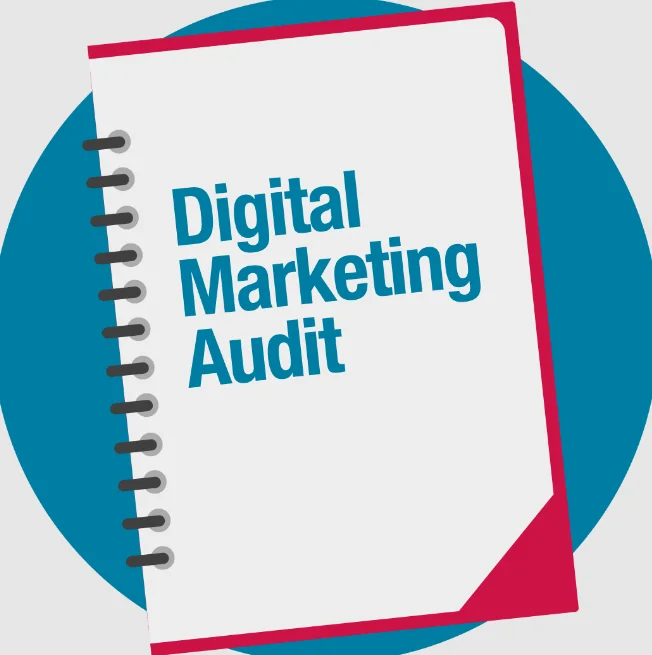
A digital marketing audit refers to evaluating current digital marketing practices, strategies and their results. This article will explain everything you need to know about
What is a Digital Audit?
In simple words, a digital marketing audit is monitoring your company`s online progress. It involves verifying
- SEO Strategies
- Social Media Content
- Website Performance
- Marketing Strategies
Digital marketing audit aims to examine the current website performance and bring necessary improvements to accomplish the business goals. Moreover, there are numerous reasons your website should undergo a digital audit.
5 Reasons Your Website Needs a Digital Marketing Audit
Here are the common reasons you need a digital audit of your business

Understanding Digital World Dynamics
Understanding the digital world is the first step to achieving digital success. You need to know marketing trends to survive for a long time. A digital audit helps you to have an idea about how the market behaves.
Moreover, it enables you to compile a list of every social media account of your business. Now you must include all the campaigns run in the previous 6-12 months. This process will allow you to see a bigger picture of the digital presence.
Strategies Alignment with Business Objectives
Over time, the market dynamics change and your business objectives shift along with trends. What worked for you a week before may be a failure today. Doing an audit helps you figure out what marketing practices you must implement.
For instance, doing an audit can help you know that your content is not aligning with business goals. You need to produce content that represents your business goals and serve the audience.
Knowing Your Audience
As we explained above, market dynamics keep on changing regularly. Therefore, customer expectations shift with trends as well. Performing a digital audit allows you to know audience behavior and tailor your strategy.
When you are producing user-centric content, it will lead to increased audience engagement and boost brand loyalty. Suppose you run a digital audit and realize that long-form blog posts are more helpful in comparison with shorter posts.
Getting a Competitive Edge
Digital market is becoming hyper-competitive in today’s advanced era. Moreover, the entrance of new brands is another thing for existing businesses to tackle. They strive to beat the competition and earn a top spot in the digital world.
Through a digital marketing audit, you have the opportunity to beat your competition and remain ahead. Doing an audit reveals surprising insights about your competitor’s moves. For example, it helps you to know that your rivals are investing more in PPC rather than organic SEO.
This priceless knowledge allows a company to refine its strategy and bring improvements to win the race.
Improving User Experience
Whether you are doing website SEO or running paid ads. User experience is a key to remain on top of the search engines. Even Google is now emphasizing that a website offering smooth user experience gets an upper hand over the others.
Therefore, you need to run constant digital marketing audits to find out how well your website is doing with customers. It may help you know that your website is lacking an interactive design or loading very slow.
Through audit you will be able to enhance your website design and boost its page loading speed. Consequently, more users will land on your website, causing an increase in website traffic and conversions.
Areas to Evaluate During Digital Marketing Audit

Content Strategy
Review the quality, relevance, and frequency of your content across all platforms. Analyze how well the content aligns with your target audience’s needs and interests. Check for a mix of content types—blogs, videos, infographics—and evaluate their engagement levels. A robust content strategy drives organic traffic, enhances SEO, and strengthens brand authority, so gaps should be identified and addressed.
Social Media Presence
Evaluate the effectiveness of your social media channels in reaching and engaging your target audience. Check for consistency in branding, messaging, and posting frequency. Analyze the engagement metrics—likes, shares, comments—and how they contribute to overall brand awareness and customer loyalty. A strong social media presence can amplify your brand and drive traffic to your website, making it a critical area of the audit.
Email Marketing
Review your email marketing campaigns for open rates, click-through rates, and conversion rates. Assess the quality of your email list, segmentation strategies, and content relevance. Ensure that your emails are mobile-friendly and compliant with regulations like GDPR. Email marketing is a direct line to your customers, so it’s essential to ensure that your campaigns are well-targeted and effective.
Paid Advertising
Analyze the performance of your paid advertising campaigns, including PPC, display ads, and social media ads. Evaluate key metrics like ROI, CPC, and conversion rates. Ensure that your ads are well-targeted and aligned with your overall marketing goals. Paid advertising can be a significant investment, so it’s crucial to maximize its effectiveness by continually optimizing campaigns and ad spending.
Conclusion
A digital marketing audit is essential for every business because it provides a comprehensive evaluation of current strategies, revealing both strengths and weaknesses. By identifying gaps and opportunities, the audit allows businesses to refine their marketing efforts, optimize ROI, and stay competitive in a rapidly changing digital landscape. Ultimately, it ensures that all digital marketing activities are aligned with business goals, driving sustained growth and success.
Read more : Optimize Your Website for Mobile-First Indexing
FAQs
A digital marketing audit is a thorough analysis of a company’s online marketing strategies, channels, and performance to identify areas for improvement.
Businesses should conduct a digital marketing audit at least once a year to ensure that their strategies are up-to-date and aligned with market trends.
A digital marketing audit typically covers website performance, content strategy, social media presence, email marketing, and paid advertising.
By identifying inefficiencies and missed opportunities, a digital marketing audit helps optimize resources, ensuring better returns on marketing investments

Alex Mitch
Welcome to my blog! With over 10 years in digital marketing, I’ve seen its incredible impact on smaller businesses. Join me as we explore how digital marketing can grow your audience and boost your business. Whether you’re an experienced entrepreneur or just starting out, you’ll find practical tips and insights to enhance your digital marketing strategies.




